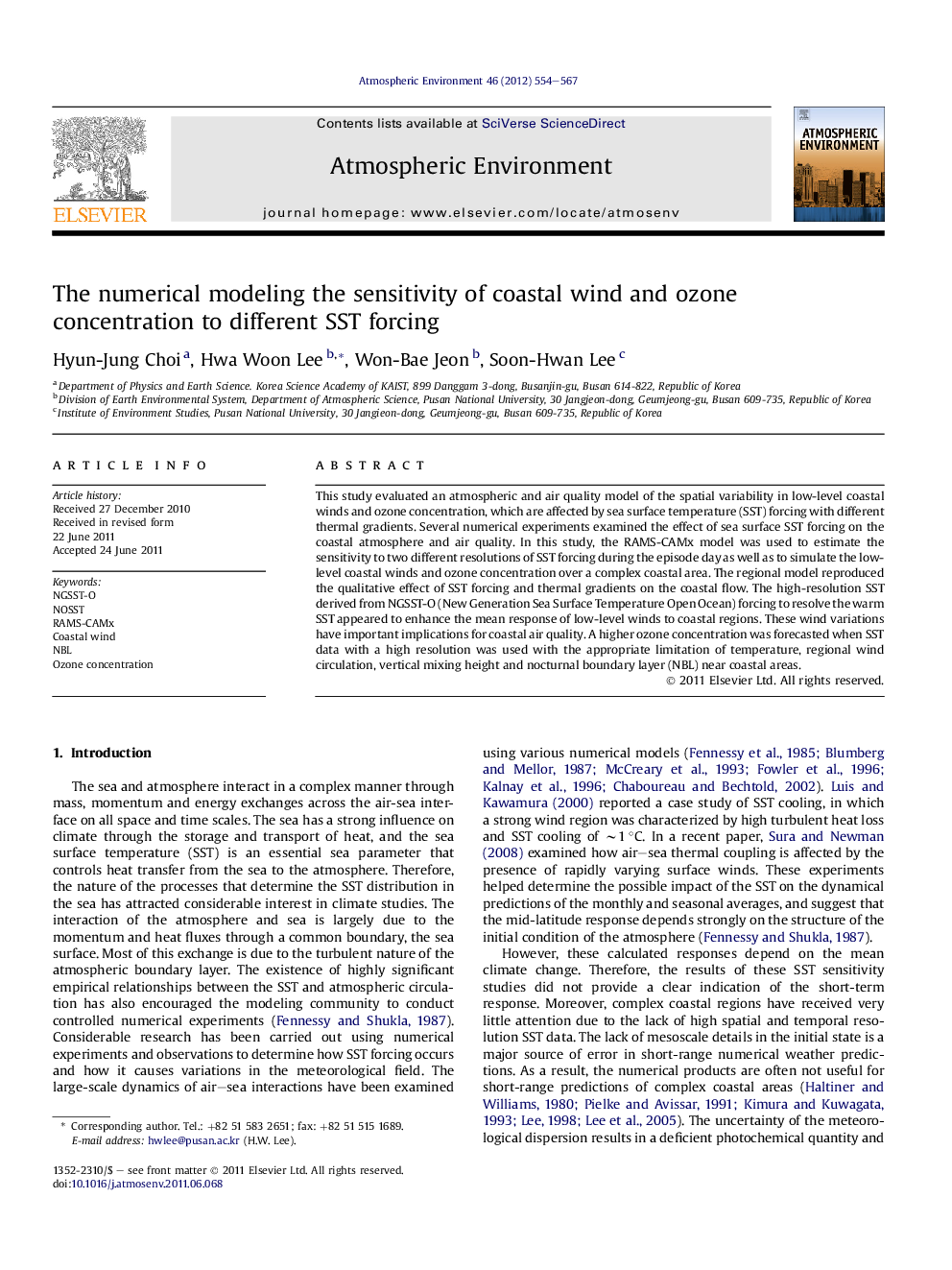| Article ID | Journal | Published Year | Pages | File Type |
|---|---|---|---|---|
| 4439289 | Atmospheric Environment | 2012 | 14 Pages |
This study evaluated an atmospheric and air quality model of the spatial variability in low-level coastal winds and ozone concentration, which are affected by sea surface temperature (SST) forcing with different thermal gradients. Several numerical experiments examined the effect of sea surface SST forcing on the coastal atmosphere and air quality. In this study, the RAMS-CAMx model was used to estimate the sensitivity to two different resolutions of SST forcing during the episode day as well as to simulate the low-level coastal winds and ozone concentration over a complex coastal area. The regional model reproduced the qualitative effect of SST forcing and thermal gradients on the coastal flow. The high-resolution SST derived from NGSST-O (New Generation Sea Surface Temperature Open Ocean) forcing to resolve the warm SST appeared to enhance the mean response of low-level winds to coastal regions. These wind variations have important implications for coastal air quality. A higher ozone concentration was forecasted when SST data with a high resolution was used with the appropriate limitation of temperature, regional wind circulation, vertical mixing height and nocturnal boundary layer (NBL) near coastal areas.
► This study attempted to simulate the air quality with the new fine SST data. ► Near the coastal regions, the NGSST-O has more increased temperatures. ► The intensified NBL in NGSST-O is shown. ► Predicting the ozone concentrations was improved by applying the NGSST-O.
